![]()
|
Shaw and Copestake Ltd |
Location and period of operation:
|
Shaw and
Copestake Ltd |
Longton |
1894 |
May 1982 |
|
Earthenware manufacturer at the Drury Works (later called the Slyvan Works), Longton, Stoke-on-Trent, England
|
Concurrently: Thomas Lawrance (Longton) Limited [as a sister company]
Subsequently: Longton Ceramics
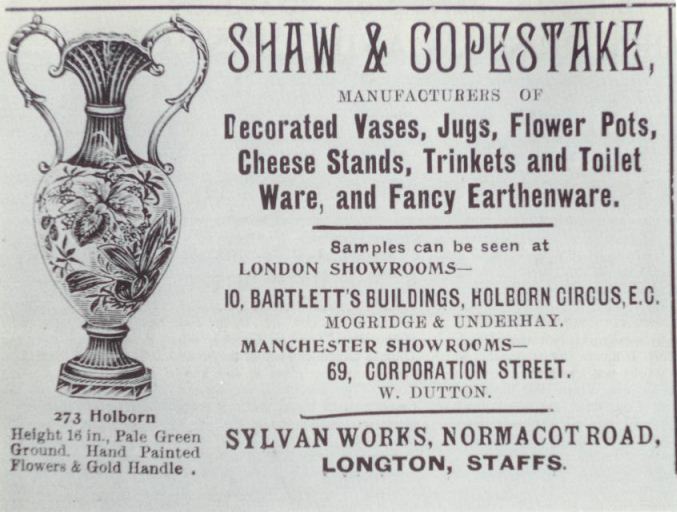
Shaw & Copestake
Sylvan Works, Normacot Road, Longton, Staffs
Manufacturers of
Decorated Vases, Jugs, Flower Pots, Cheese Stands,
Trinkets and Toilet Ware, and Fancy Earthenware
June 1904 Pottery Gazette
courtesy: 'The SylvaC Story' - Susan Jean Verbeek

Shaw & Copestake,
earthenware manufacturers
from..... 1907
Staffordshire Sentinel
'Business Reference Guide to The Potteries, Newcastle & District'
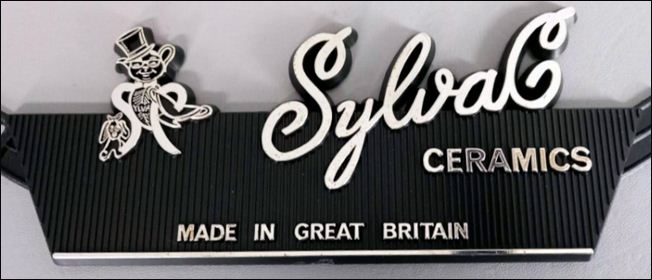
Sylvac Ceramics
Made in Great Britian
The name "SylvaC" seems to have been registered by Shaw & Copestake in 1938
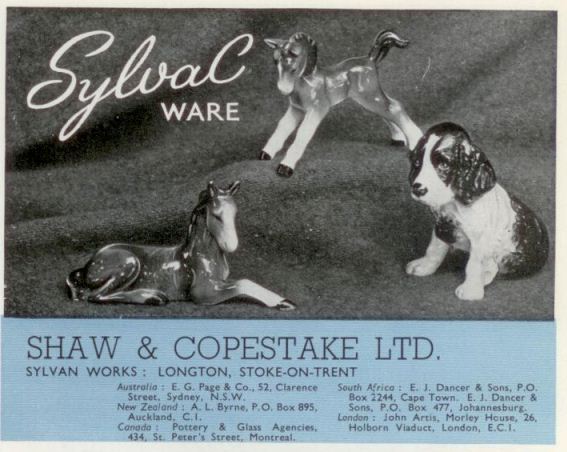
Shaw & Copestake Ltd
Sylvan Works : Longton, Stoke-on-Trent
1947 Pottery Gazette
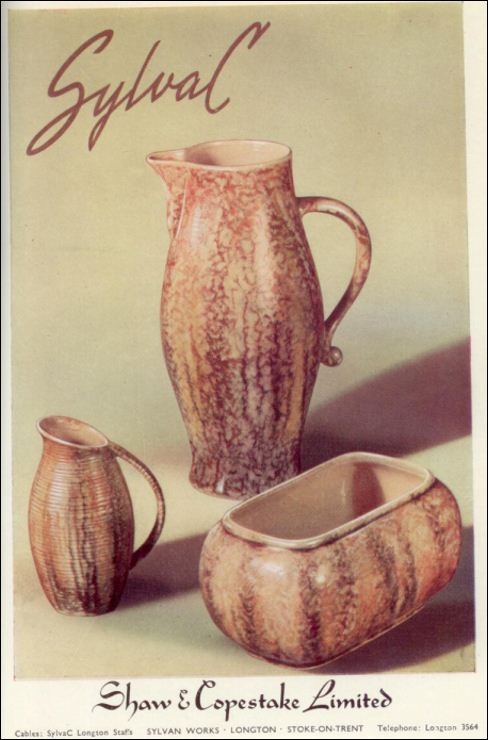 SylvaC Shaw & Copestake Limited
|
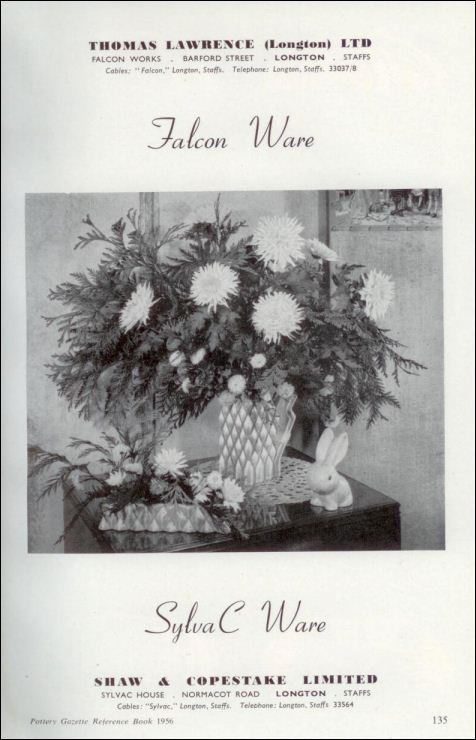 advert for both Thomas Lawrence (Longton) Ltd and Shaw & Copestake Limited 1956 Pottery Gazette |
Examples of Shaw & Copestake ware:
| "The productions of
the Sylvan Works, under the trade name 'Sylvac', comprise an extensive
range of animal models and other novelties, posy bowls, flower vases,
etc. The animal studies in particular are their pride, since they demand
a very high degree of skill, both in modelling and potting."
1956 book 'British Potters and Pottery Today' |
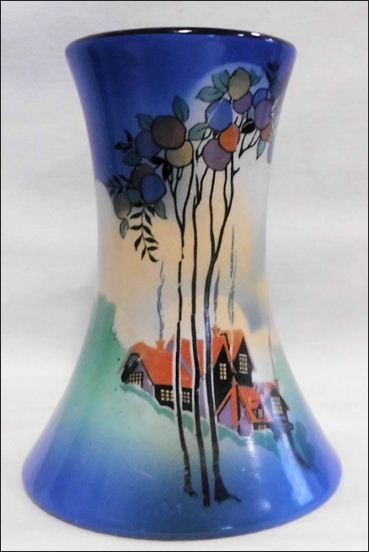 spill or posy vase - decorated in the style of Clarice Cliff |
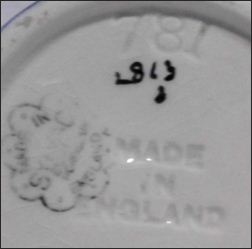 shape number 781 marked with the typical daisy
shape mark |
photos courtesy: Francis Tanner
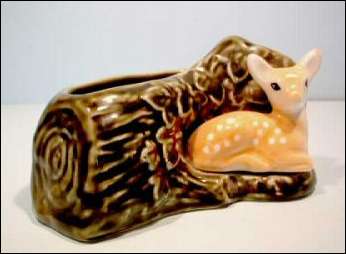 Posy trough with deer Woodland Range designer: Reginald Thompson produced 1960s to 1982 pattern number - 4231
|
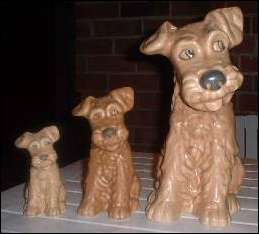 Range of terrier dogs produced 1939-82 pattern numbers - 1378, 1379, 1380
|
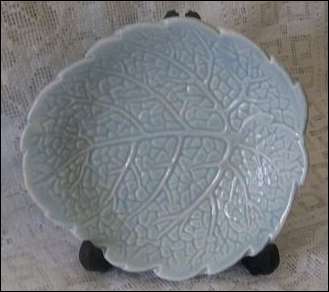 leaf shaped and patterned small dish
|
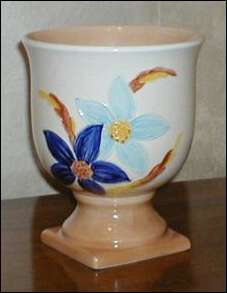 Vase with square foot designer: George Matthews produced 1970s pattern number - 4950 |
 Hand Painted William Shakespeare character jug produced 1960s - 1975 pattern number - 4473 |
 Honey Pot with Rasberry face designer: George Matthews produced 1970s pattern number - 4898 |
Cordon Brun and Winsor Kitchen Ware
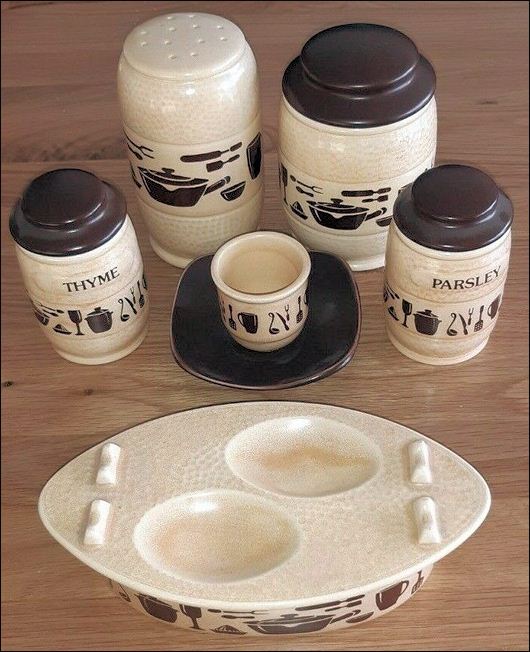 |
Shaw & Copestake produced a range of kitchen ware under the Sylvac name. There were two different decorations using the same moulds - numbers 5337 to 5366. Cordon Brun Kitchen Ware was cream and brown and decorated with kitchen utensils. Winsor Kitchen Ware was white with a red, grey or black band. Windsor Kitchen Ware continued to be produced by Crown Winsor.
|
Teddy Nursery range
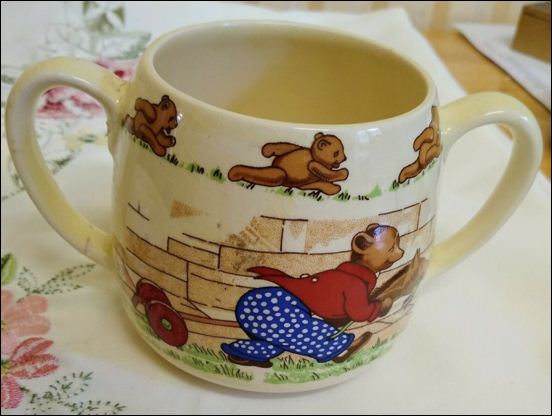 Two handled cup from the Teddy Nursery range pattern number - 3617 The pattern originally
dates from c.1960-62 and is one of the last designs produced by the Thomas
Lawrence company. |
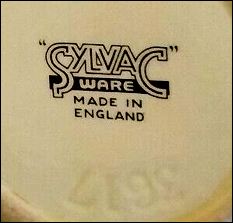 SylvaC Ware Made in England impressed number - 3617
|
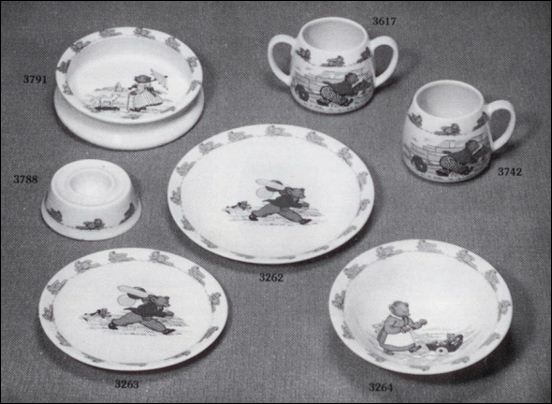 Teddy Nursery range |
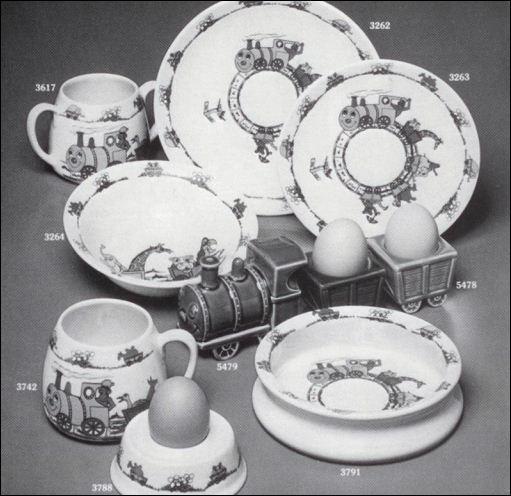 Zooline Nursery range |
The Teddy and Zooline nursery
patterns shared the same shapes
all these were produced from the 1960s to 1989 (under Crown
Winsor)
The exception being the train engine and truck (5478,9) which were only produced
in 1981-82)
black & white photos - courtesy: 'The SylvaC Story' - Susan Jean Verbeek
Marks used on ware for identification:
Early ware was unmarked.
"SylvaC" was a trade name often used by Shaw & Copestake,
it was not until c.1937 that the name "SylvaC" was impressed on the
bottom of the ware
but it was very haphazard and much ware was unmarked.
SILVO
[some 1920's ware was
identified with this impressed mark]
SylvaC
[SylvaC is always spelt
with a large S and C]
SylvaCeramics
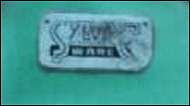
SylvaC Ware
Metal foil tag.
This mark was also used as a printed mark.
There is a similar mark for export ware which has
"Made in Great Britain"
1930's
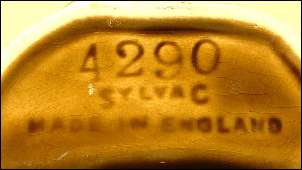
SylvaC
Made in England
Typical impressed mark used
continually
from the early 1940s onwards
1940s +
4290 is a pattern reference
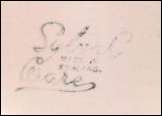 SylvaC Ware Made in England Printed mark with "SylvaC Ware" in sloping script. 1946+ (to late 50s) |

SylvaC Ware England Simple printed marks |
 SylvaC Made in England Simple printed marks |
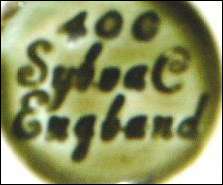 SylvaC Ware England Impressed script mark 1940-50s |
 SylvaC Made in England impressed mark |
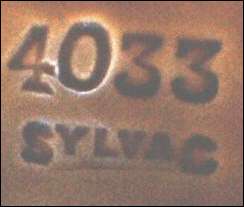 SylvaC impressed mark |
the impressed numbers are pattern references
 SylvaC Ware Made in England printed label 1950-60s |
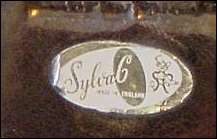 SylvaC Made in England printed label
|
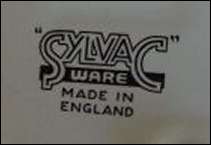 SylvaC Ware Made in England Printed mark - based on the foil label of the 1930s 1960s + |
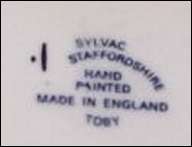 SylvaC Staffordshire Made in England Printed mark used on Toby and Character jugs 1960s + |
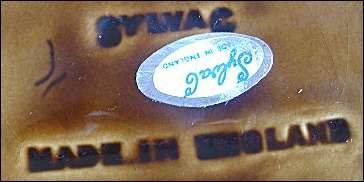 |
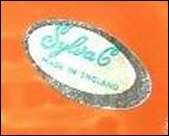 |
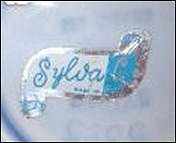 |
SylvaC
various foil labels, generally used with impressed or printed marks
1970s
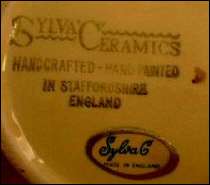
Sylva'C'eramics
early 1980s
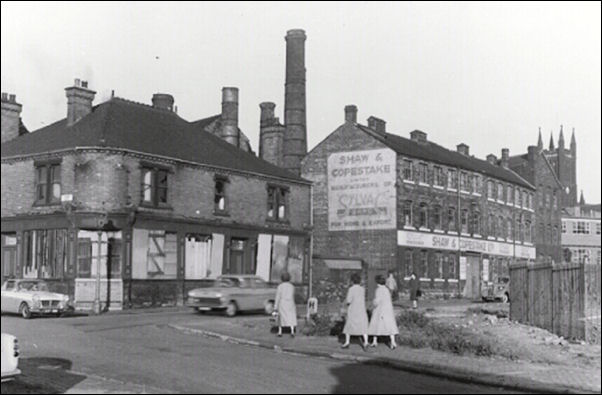
Shaw & Copestake Sylvan
Works
(originally called the Drury Works)
This photo taken from Gower
Street, Normacot Street is running left to right.
At the left is the Sealion pub on the corner of Chadwick Street
(the Spiritualist Church is now on the site of the pub) - on the far right is
St. James Street.
photo: 26 September 1960 - Lovatt Collection
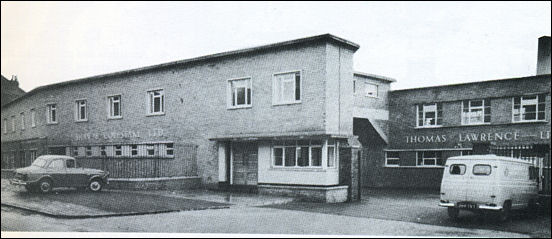
Shaw & Copestake Ltd
and Thomas Lawrence Ltd in 1962
courtesy: 'The SylvaC Story' - Susan Jean Verbeek
In
1957, to accompodate both businesses, a new factory was built in Normacot Road,
Longton,
on land opposite the old Shaw and Copestake
factory.
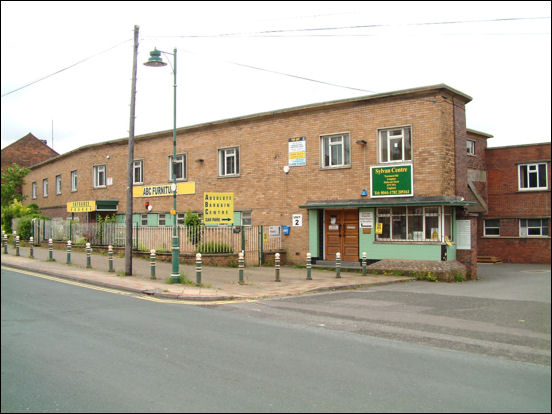
the same buildings in 2008
the old pottery buildings have been converted into business units
Questions, comments, contributions? email: Steve Birks